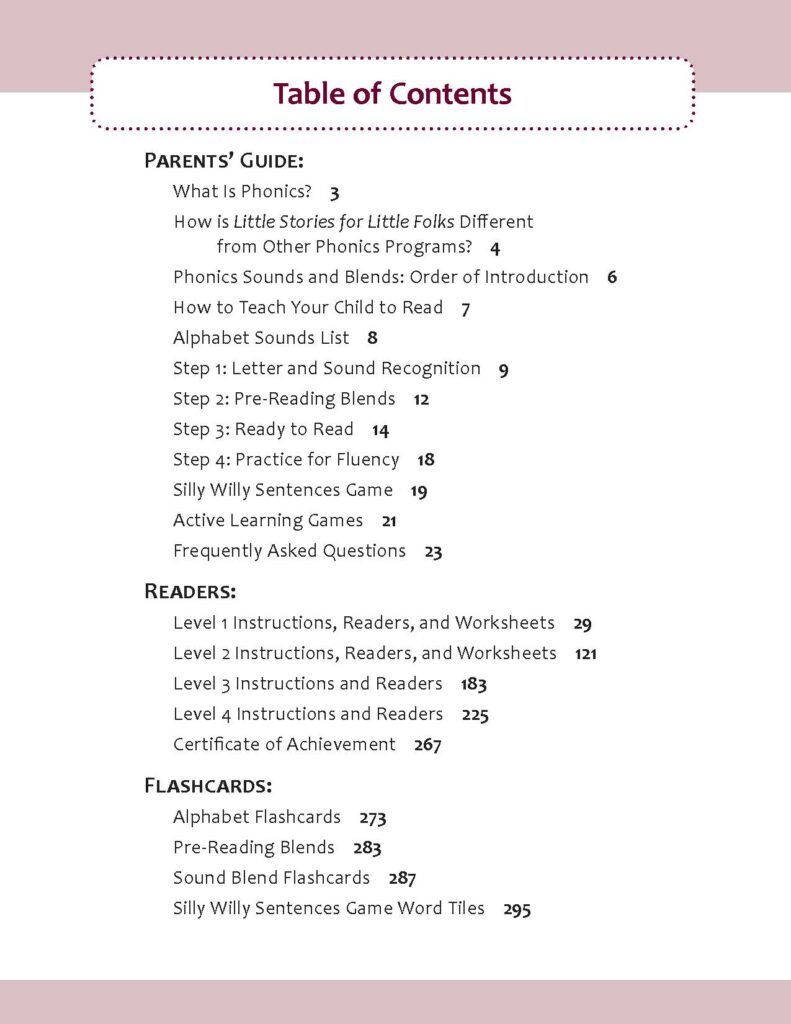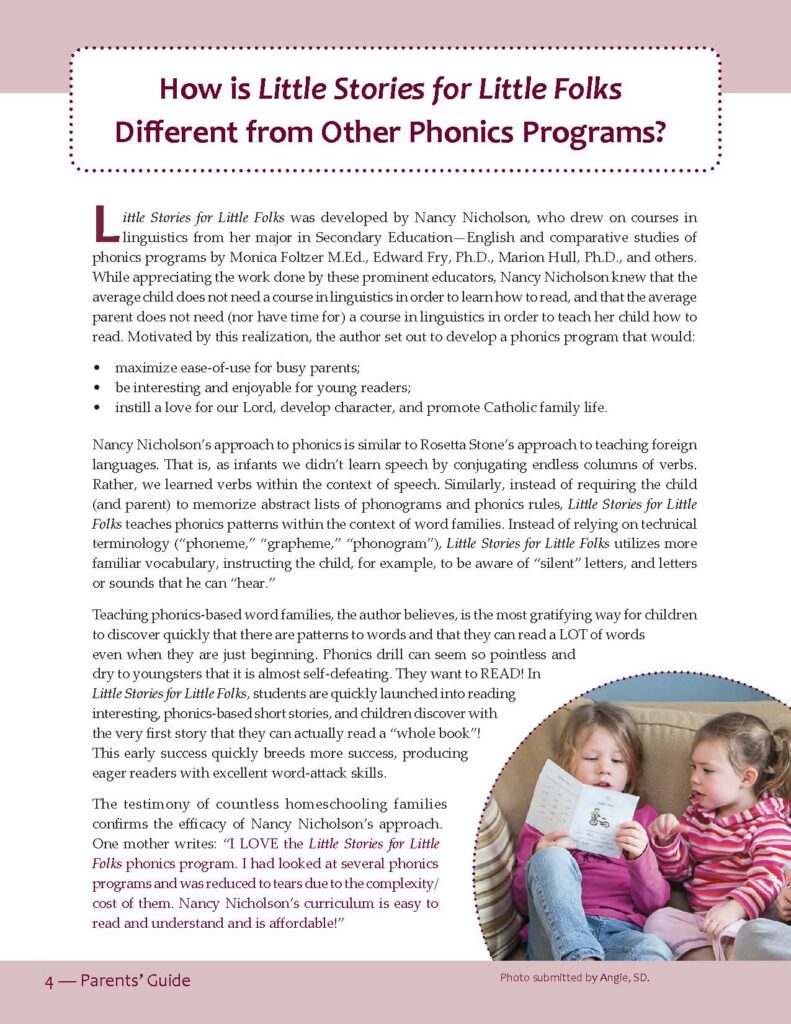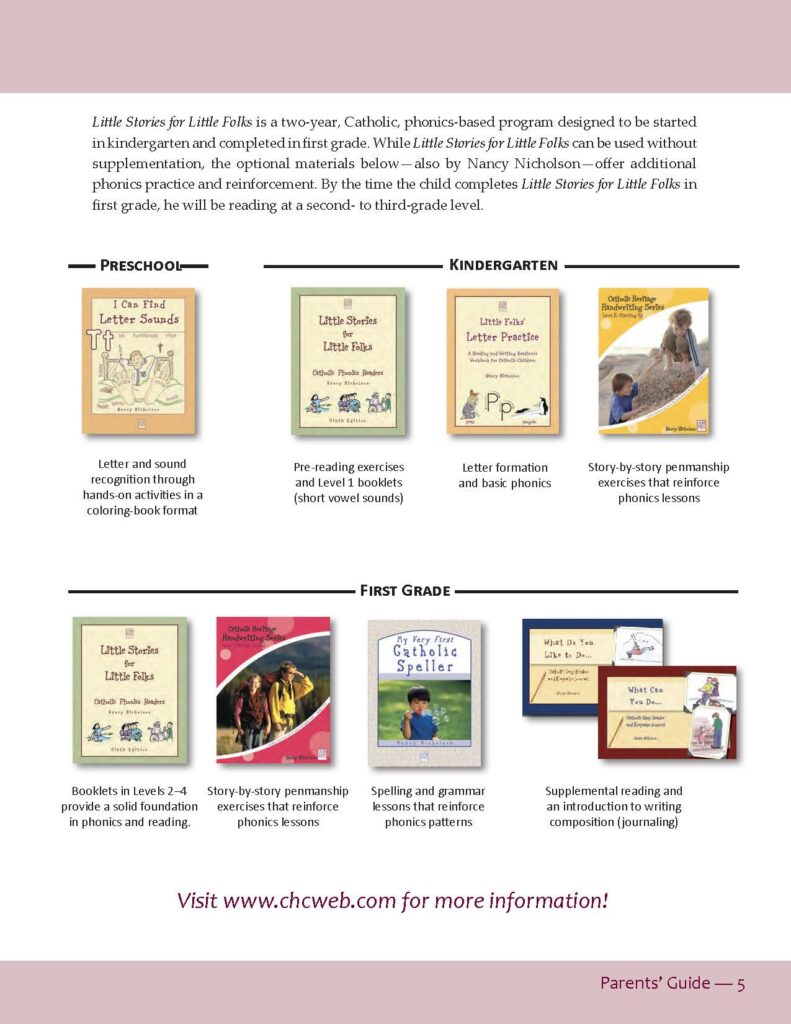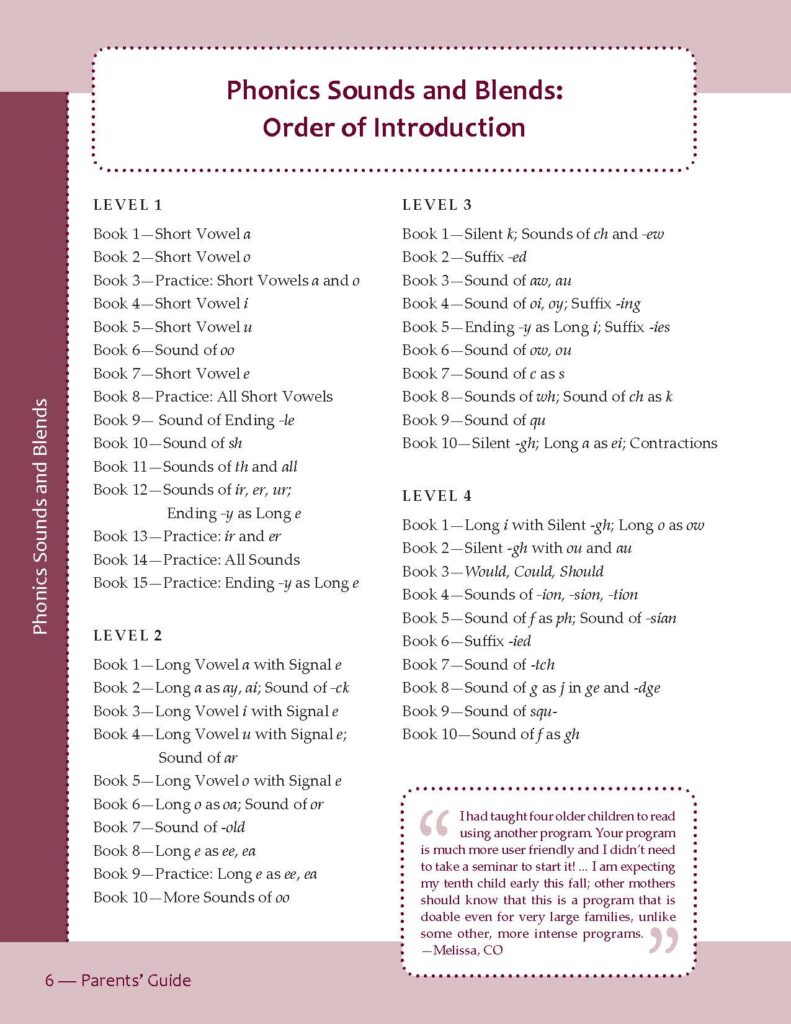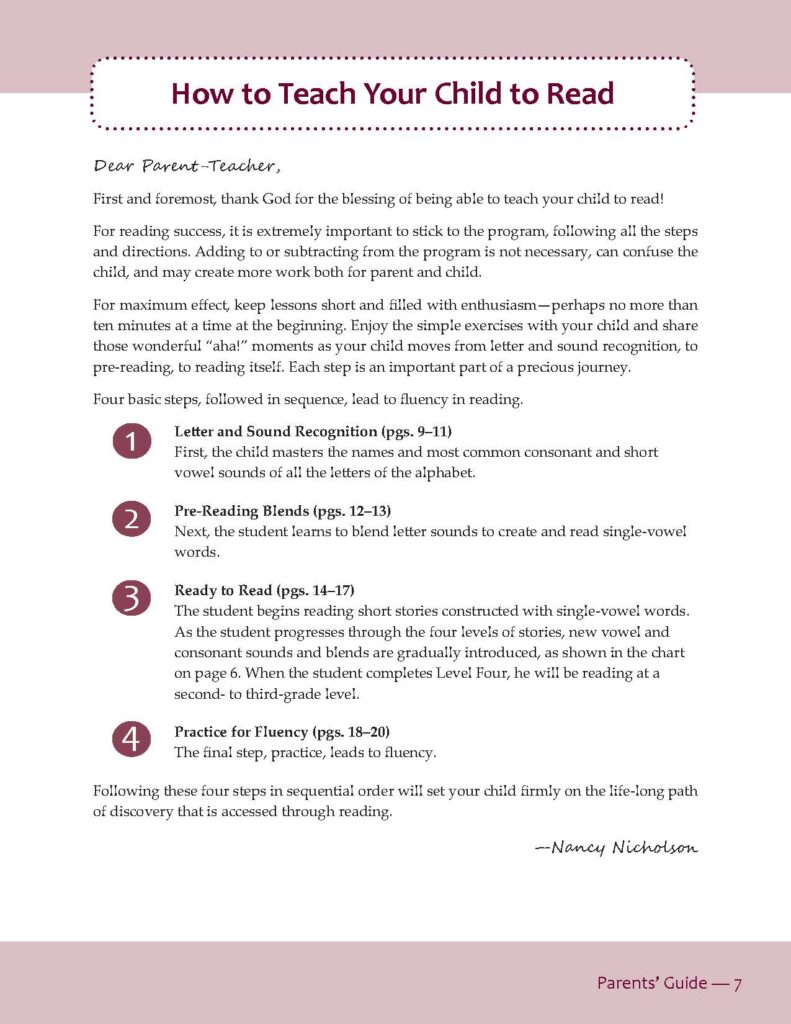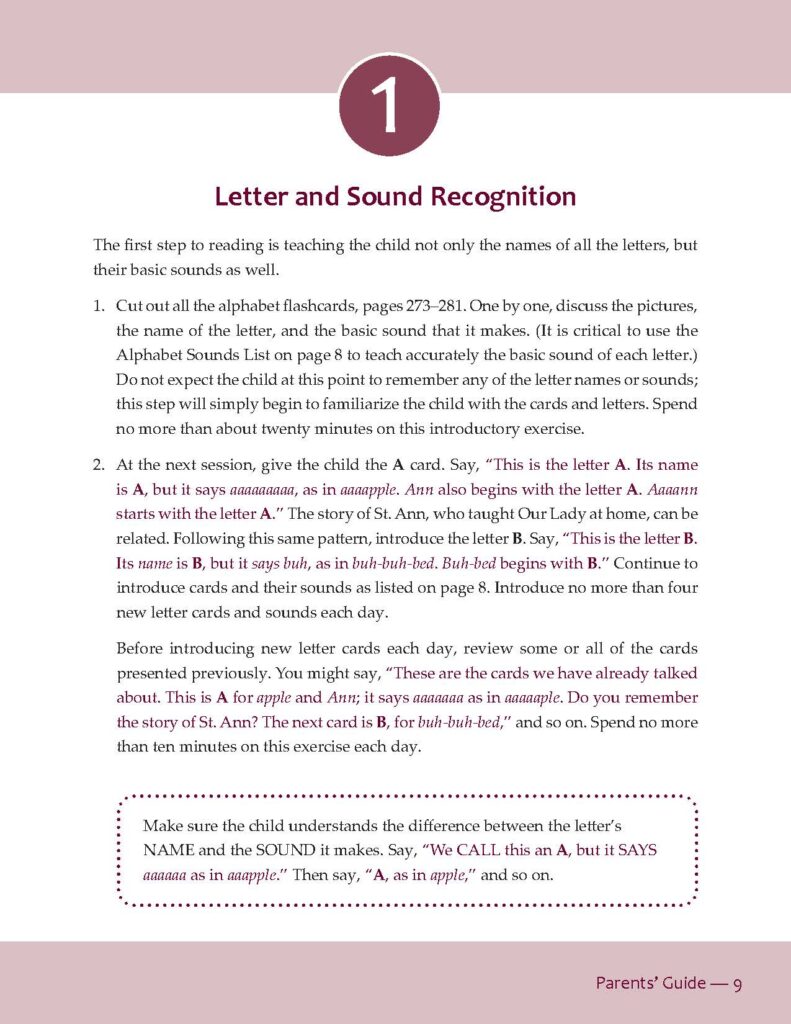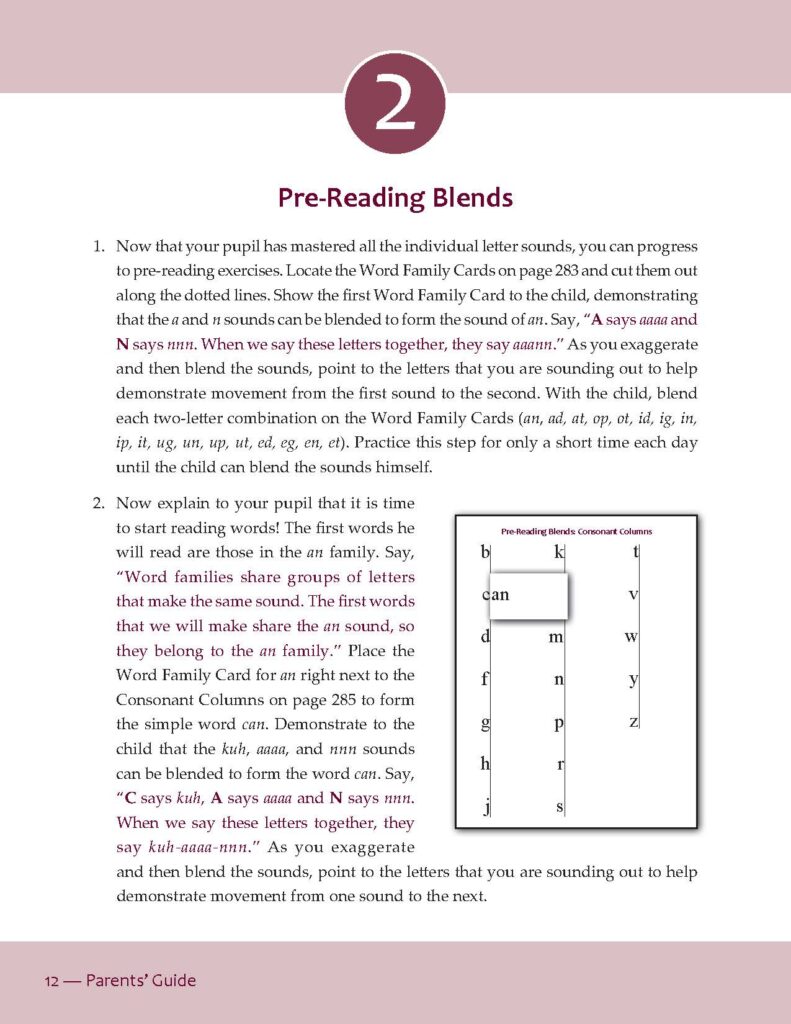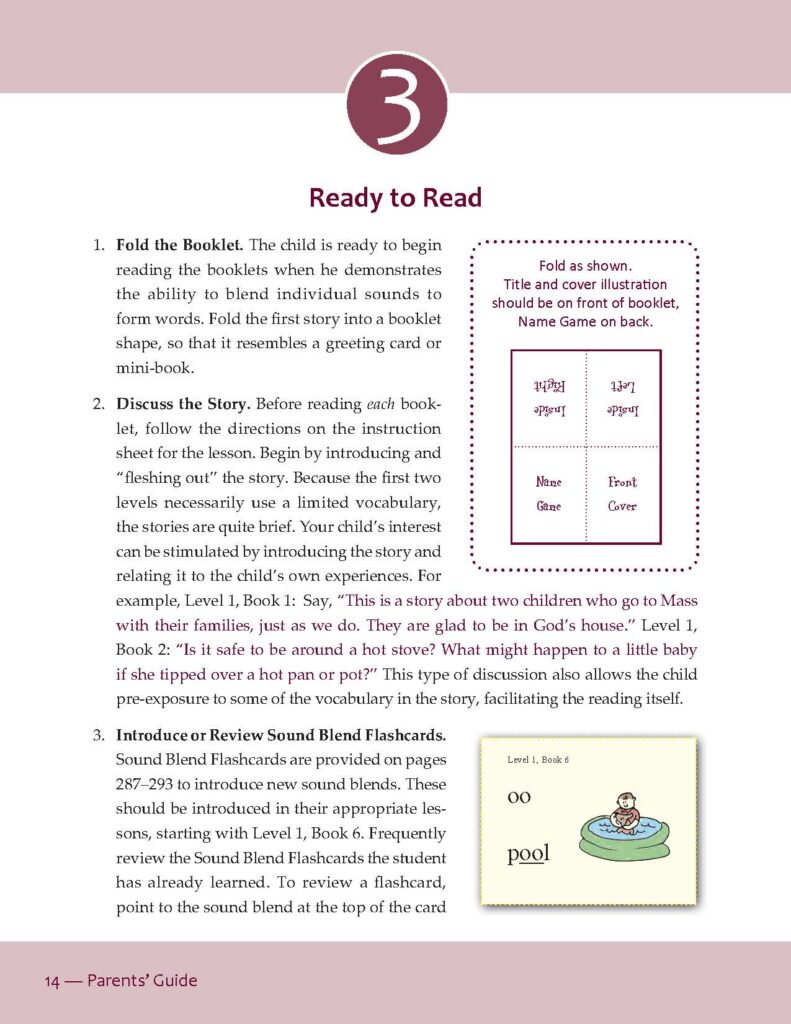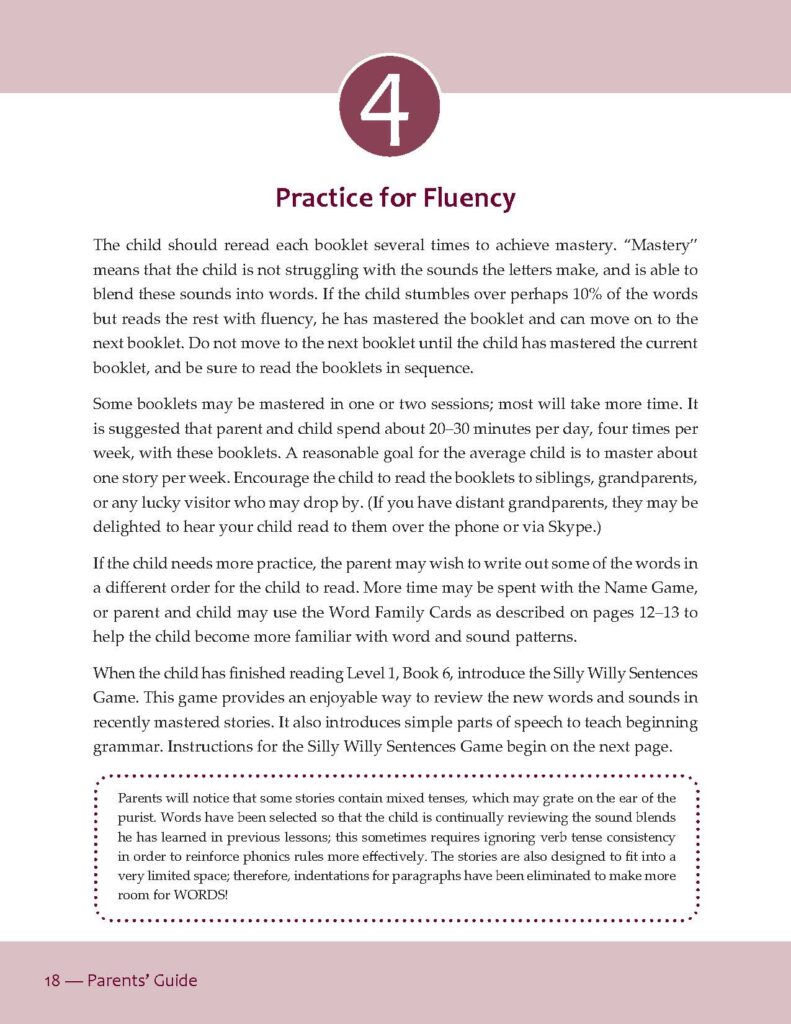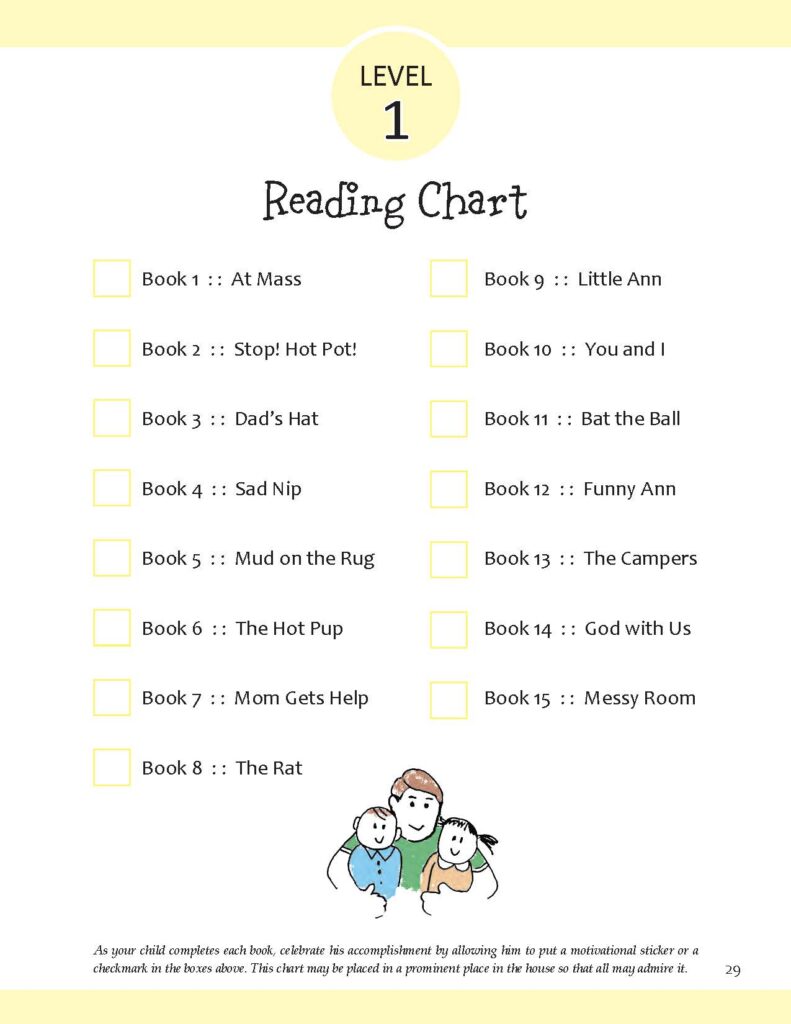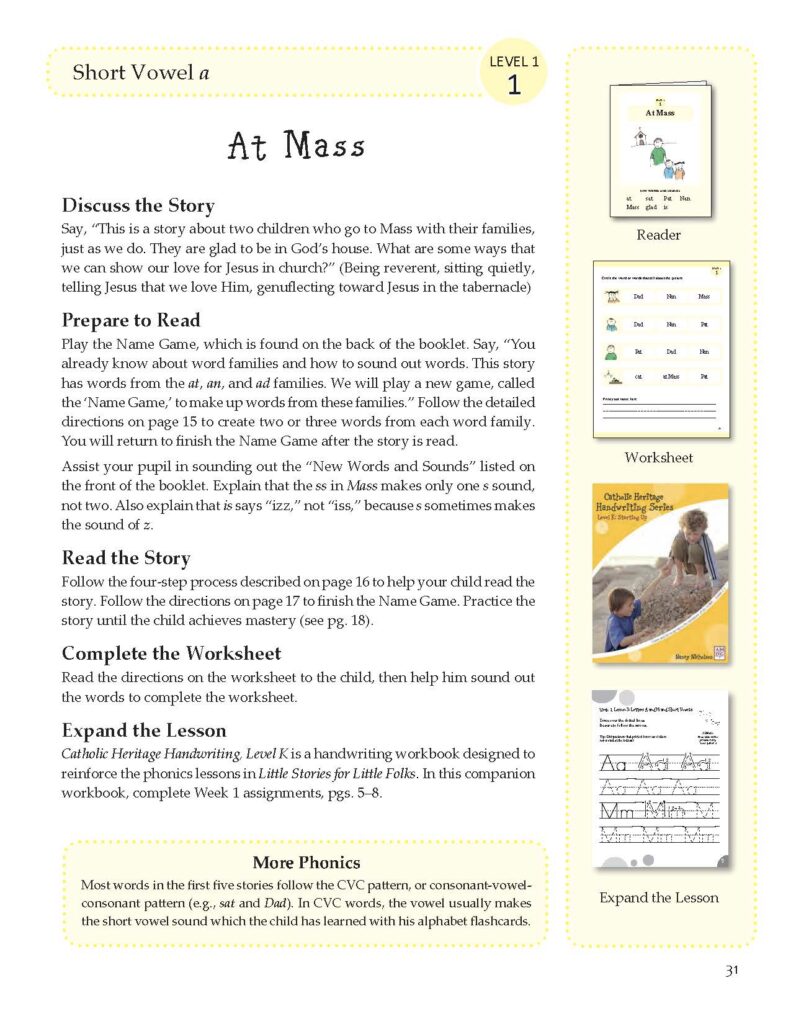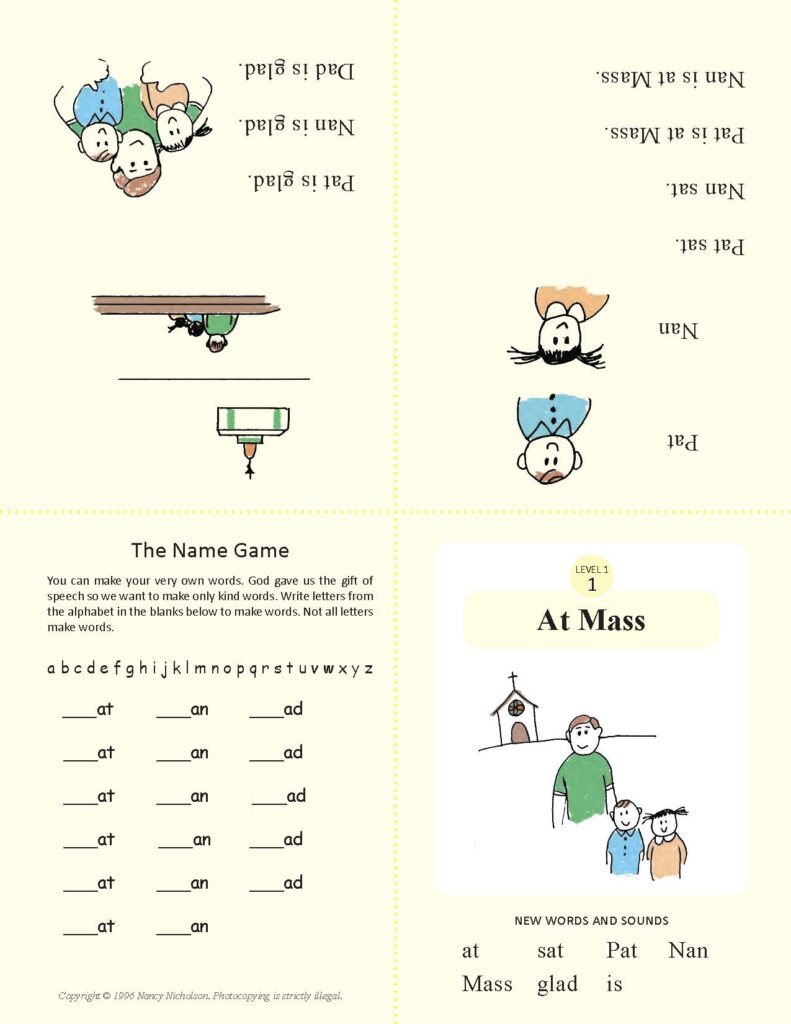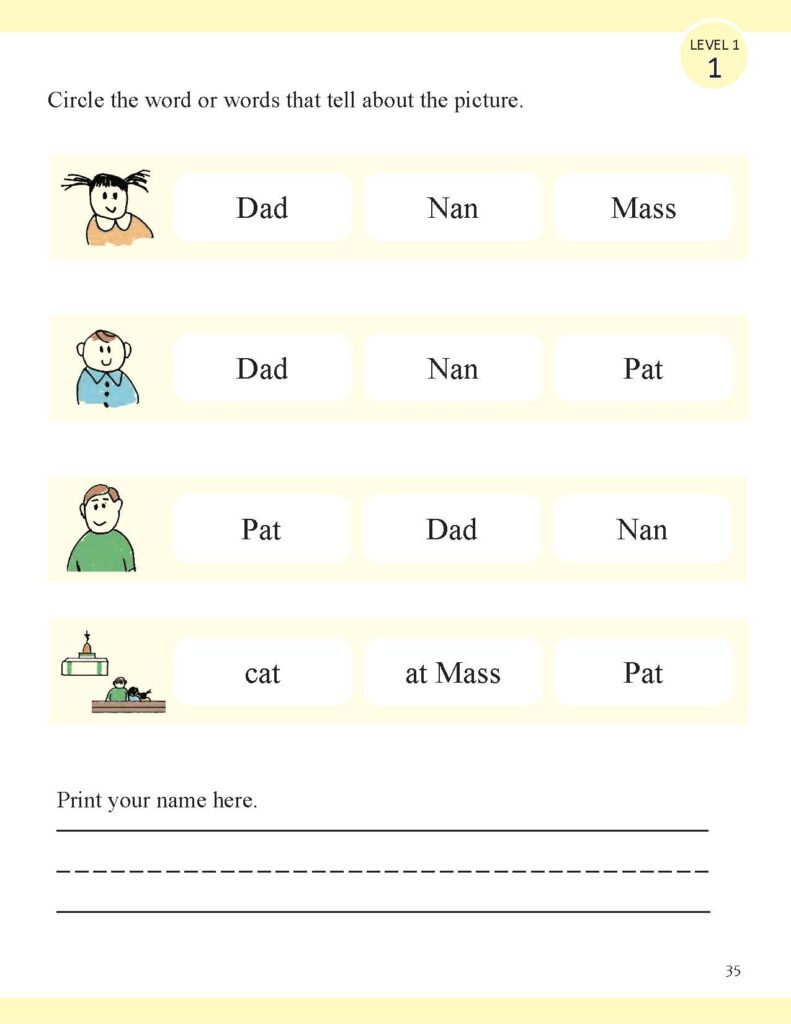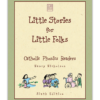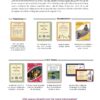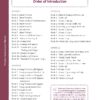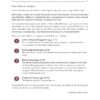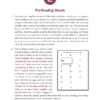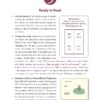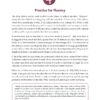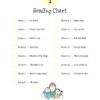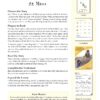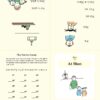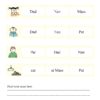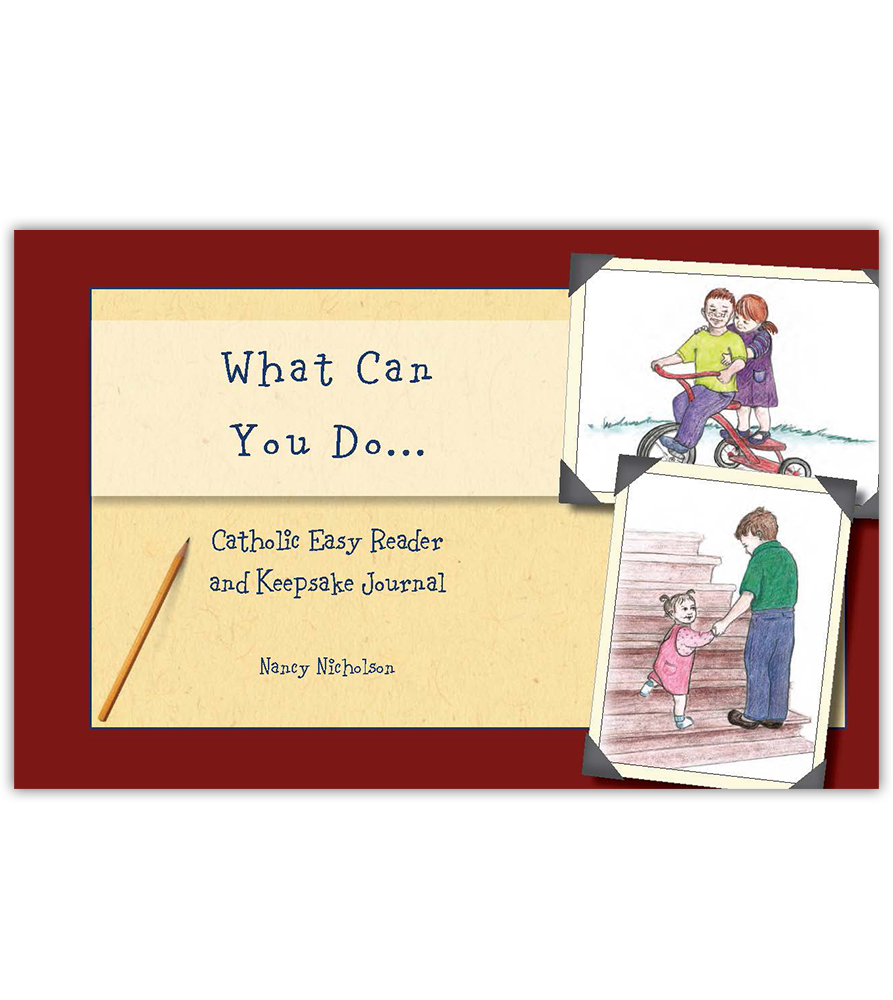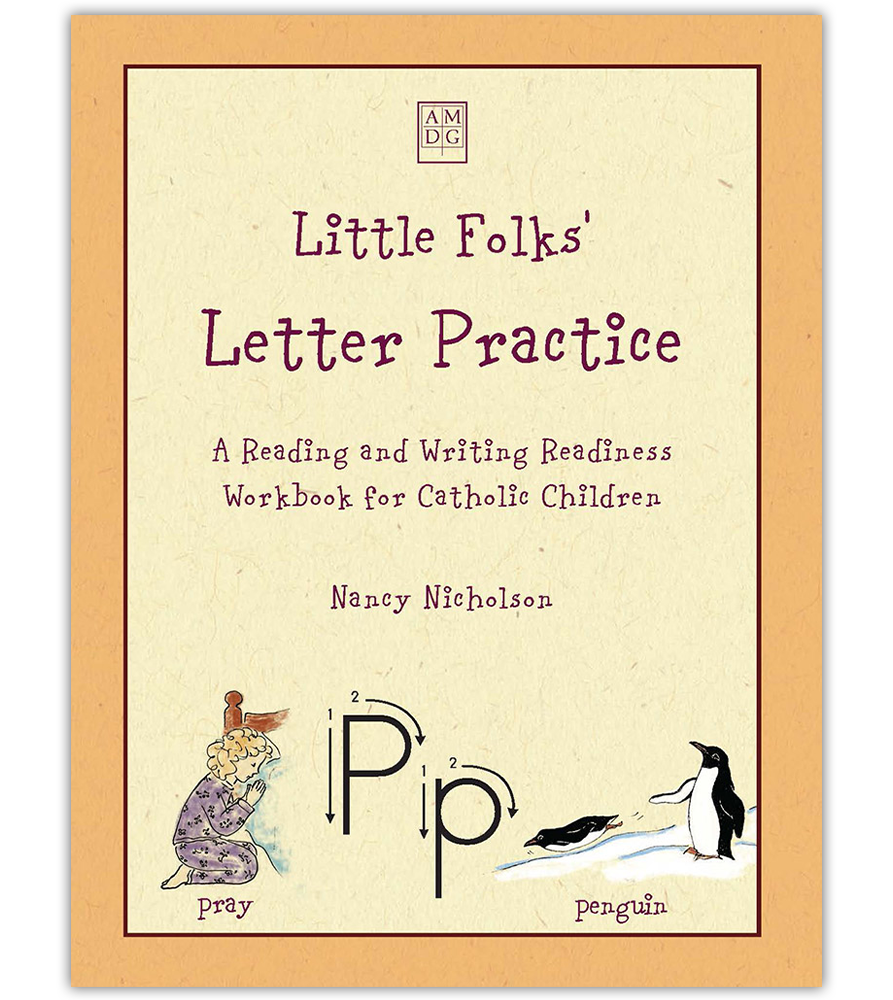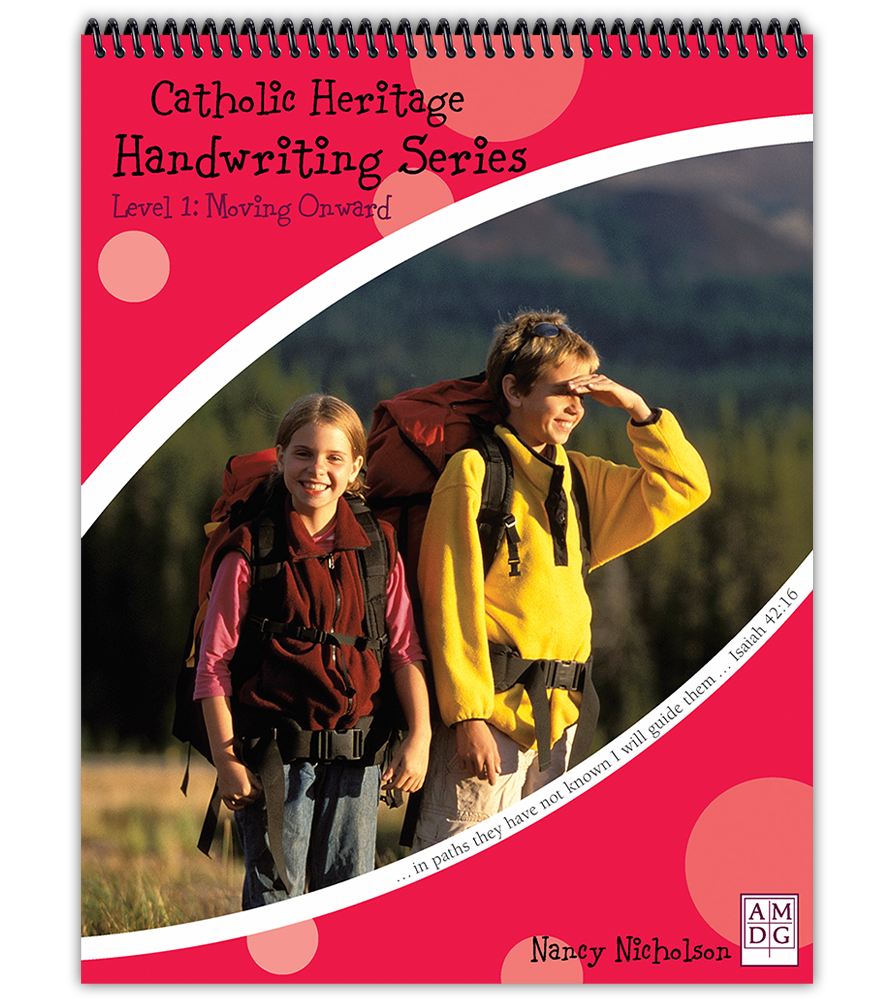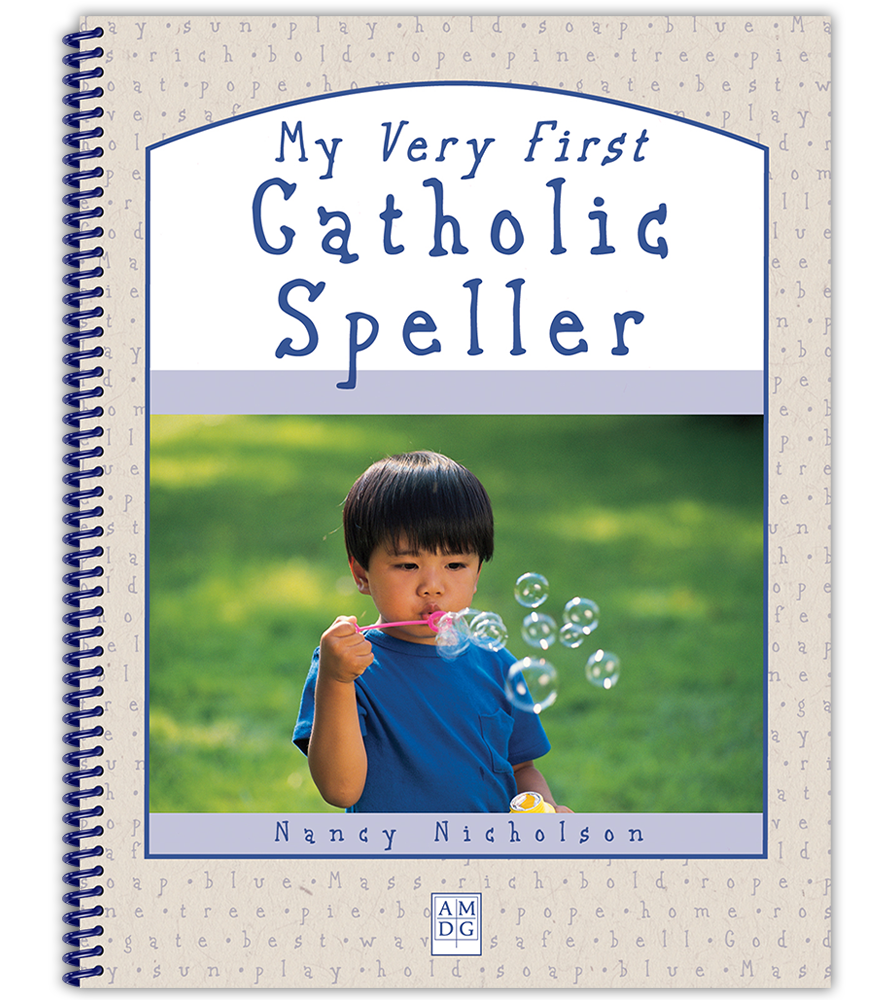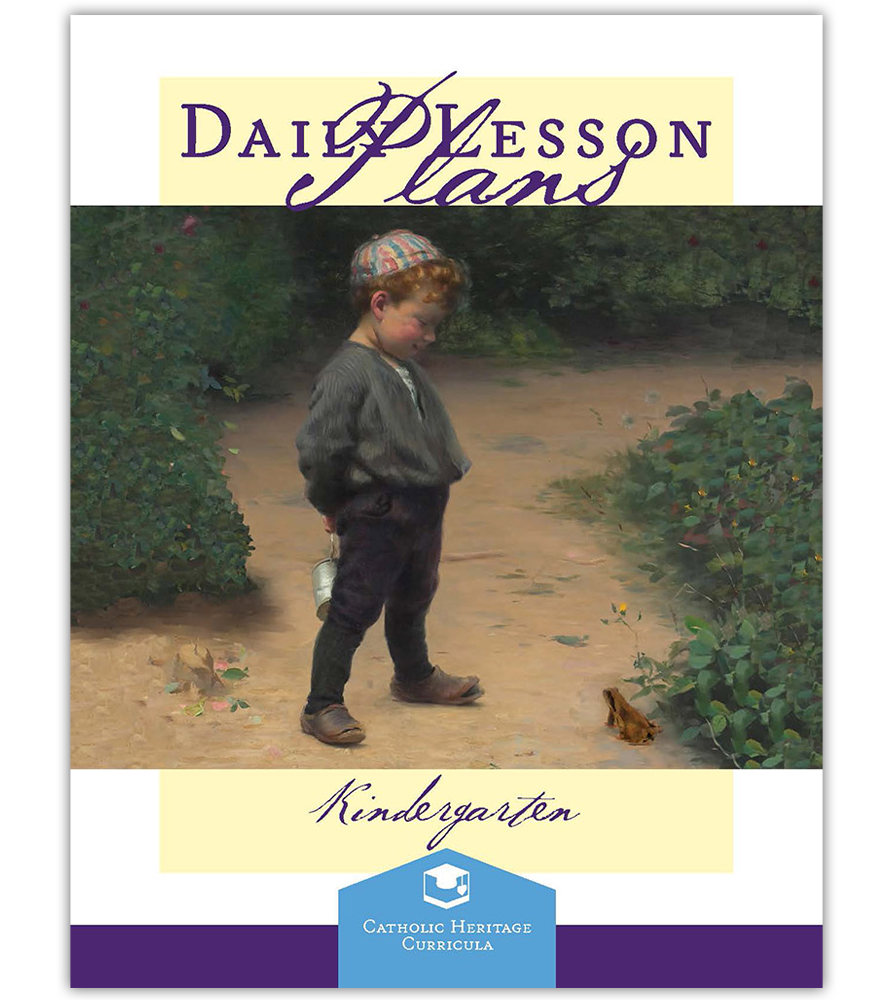Little Stories for Little Folks is a complete, phonics-based reading program designed to be started in kindergarten and completed in first grade. This “open-and-go” program:
- maximizes ease-of-use for busy parents;
- is interesting and enjoyable for young readers;
- instills a love for our Lord, develops character, and promotes Catholic family life.

Little Stories for Little Folks includes:
- Alphabet flashcards printed on stiff cardstock
- Active games teaching the alphabet, letters, and sound recognition
- Pre-reading exercises that teach the student to blend sounds into words
- 45 stories with color illustrations about other homeschool families, foldable from 8½”×11″ sheets to 4-page booklets
- Parent instruction page before each lesson showing in simple steps how to present each reading exercise, worksheet, and story
These elements are all organized and contained under one cover, making presentation of the lessons simple and stress-free.
Each story is designed to be folded into a little booklet, which gives the child the satisfaction of finishing a “whole book.” By the time the child completes Little Stories for Little Folks in first grade, he will be reading at a second- to third-grade level, at least a full year above grade level.
A daily schedule for this program is available in CHC Lesson Plans for Kindergarten and CHC Lesson Plans for First Grade.
Companion Books:
See also Little Stories for Little Folks’ companion workbooks: Catholic Heritage Handwriting, Level K and Level 1. These workbooks provide story-by-story phonics practice as primary students copy and reinforce letter combinations and words that they have just read in Little Stories for Little Folks. Children master reading skills even more rapidly when using these companion workbooks.
Higher level reading practice is available through the engaging, character-building stories in What Do You Like to Do, What Can You Do, Bigger Stories for Little Folks, Devotional Stories for Little Folks, and Devotional Stories for Little Folks, Too.
Four basic steps, followed in sequence, lead to fluency in reading.
- Letter and Sound Recognition: First, the child masters the names and most common consonant and short vowel sounds of all the letters of the alphabet.
- Pre-Reading Blends: Next, the student learns to blend letter sounds to create and read short-vowel words.
- Ready to Read: The student begins reading short stories constructed with short-vowel words. As the student progresses through the four levels of stories, new vowel and consonant sounds and blends are gradually introduced, as shown in the chart below. When the student completes Level Four, he will be reading at a second- to third-grade level.
- Practice for Fluency: The final step, practice, leads to fluency.
Level 1
Short Vowel a
Short Vowel o
Practice: Short Vowels a and o
Short Vowel i
Short Vowel u
Sound of oo
Short Vowel e
Practice: All Short Vowels
Sound of Ending -le
Sound of sh
Sounds of th and all
Sounds of ir, er, ur; Ending –y as Long e
Practice: ir and er
Practice: All Sounds
Practice: Ending –y as Long e
Level 2
Long Vowel a with Signal e
Long a as ay, ai; Sound of –ck
Long Vowel i with Signal e
Long Vowel u with Signal e; Sound of ar
Long Vowel o with Signal e
Long o as oa; Sound of or
Sound of –old
Long e as ee, ea
Practice: Long e as ee, ea
More Sounds of oo
Level 3
Silent k; Sounds of ch and –ew
Suffix –ed
Sound of aw, au
Sound of oi, oy; Suffix –ing
Ending –y as Long i; Suffix –ies
Sound of ow, ou
Sound of c as s
Sounds of wh; Sound of ch as k
Sound of qu
Silent –gh; Long a as ei; Contractions
Level 4
Long i with Silent –gh; Long o as ow
Silent –gh with ou and au
Would, Could, Should
Sounds of –ion, –sion, –tion
Sound of f as ph; Sound of -sian
Suffix –ied
Sound of –tch
Sound of g as j in ge and -dge
Sound of squ-
Sound of f as gh
Product Code: LSLF
Format: Softcover
Binding: Tear-off pad
Page Count: 302 pages
Dimensions: 8.5″×11″
ISBN: 9780985164201
Returnable? No, view return policy.
Consumable? Yes, purchase one per student.
Answer key: None required.
Nancy Nicholson is one of the founding authors of Catholic Heritage Curricula. Equipped with an abundance of God-given talent, a major in Secondary Education–English, and years of experience homeschooling her own children, she has written over thirty educational titles, beginning with Little Stories for Little Folks. Her unique ability to develop programs and workbooks that “fit” both advanced and struggling students is due to her experience raising children of different ability levels and learning styles: two of her children are developmentally challenged, while another went on to graduate from Cornell and is now a college professor.
Q: What reading level will my child be at once he has completed Little Stories?
A: When a student completes all four levels of stories in Little Stories for Little Folks, he is reading at a second- to third-grade level. The majority of children begin Little Stories in kindergarten and finish it in first grade, which means that by the end of the program they are reading a full year above grade level.
Q: Why teach phonics rather than sight reading/”whole language” reading? And how is Little Stories for Little Folks different from other phonics programs?
A: Good questions! You can learn about these important topics in the article “What Is Phonics?”.
Q: I am using CHC Lesson Plans for Kindergarten, which includes a daily schedule for Little Stories. Do I have to follow the schedule in the lesson plan, or can I go more slowly/quickly?
A: Please do proceed through the lessons at your child’s pace, whether that is slower or faster than the schedule laid out in the lesson plans. Children’s literacy skills develop at markedly different rates in the early years. Some children are still sounding out words until they are seven, but then reading suddenly “clicks,” and they rapidly advance to the level of their peers. The key is to proceed at the child’s own pace, rather than pushing a child to keep up with artificial standards or keeping a child from advancing when he is eager to learn more. Remember, in homeschooling there is no such thing as “ahead” or “behind”!
Q: My child has already started learning to read with another program. Where do we start in Little Stories for Little Folks?
A: If your child has begun with a different phonics program and is now switching to Little Stories for Little Folks, take a few days to review the concepts at the beginning of Little Stories for Little Folks, following the detailed directions in this article.
Q: Is Little Stories for Little Folks a complete phonics program, or do I need to add a phonics workbook for extra practice?
A: Little Stories for Little Folks and the My Catholic Speller series together provide a complete phonics program. Following the directions given in the readers and spellers ensures that the student will cover all the topics needed for a strong, phonics-based foundation to reading and spelling. Additional phonics reinforcement exercises can be found in Catholic Heritage Handwriting, Level K and Level 1. These exercises are keyed exactly to the phonics lessons taught in Little Stories for Little Folks, providing additional phonics/reading practice.
Related Products
If you like the featured item on this page, you might be interested in the related materials below.
More Products for This Grade Level
If you like the featured item on this page, you might be interested in other items for the same grade level.


